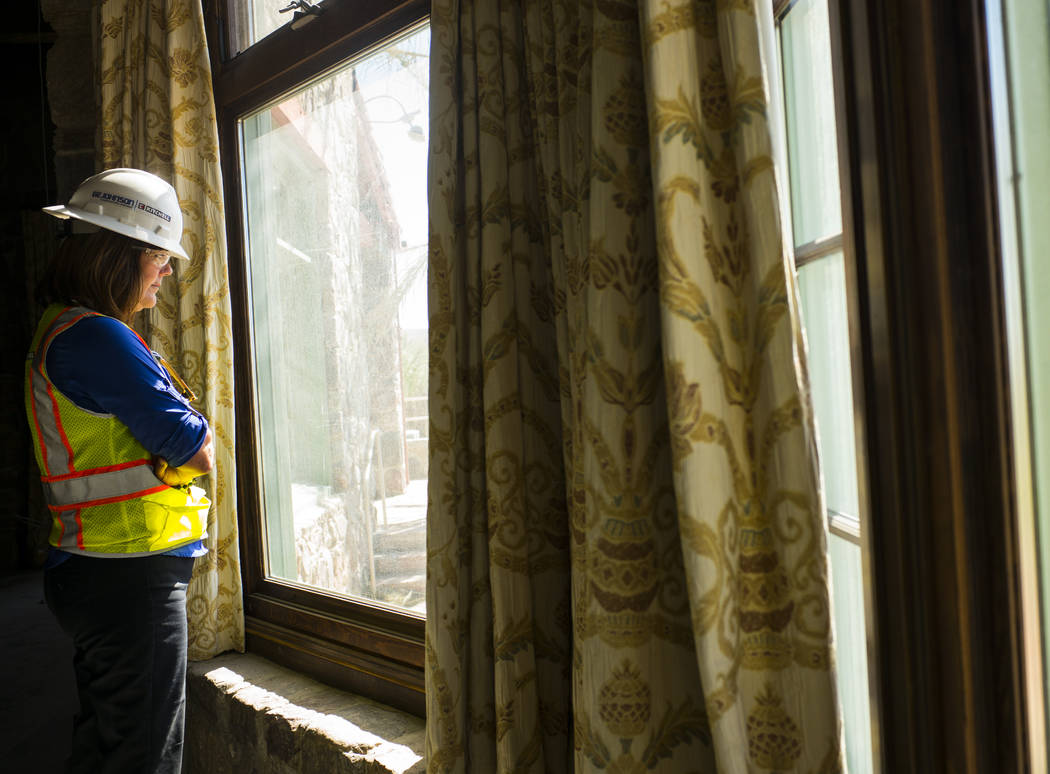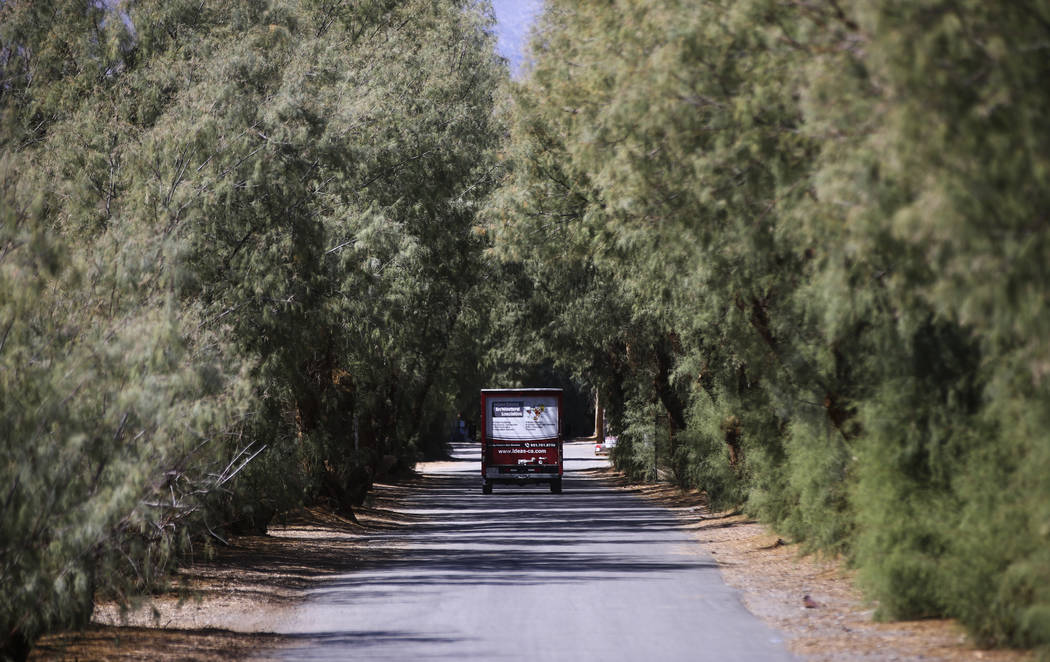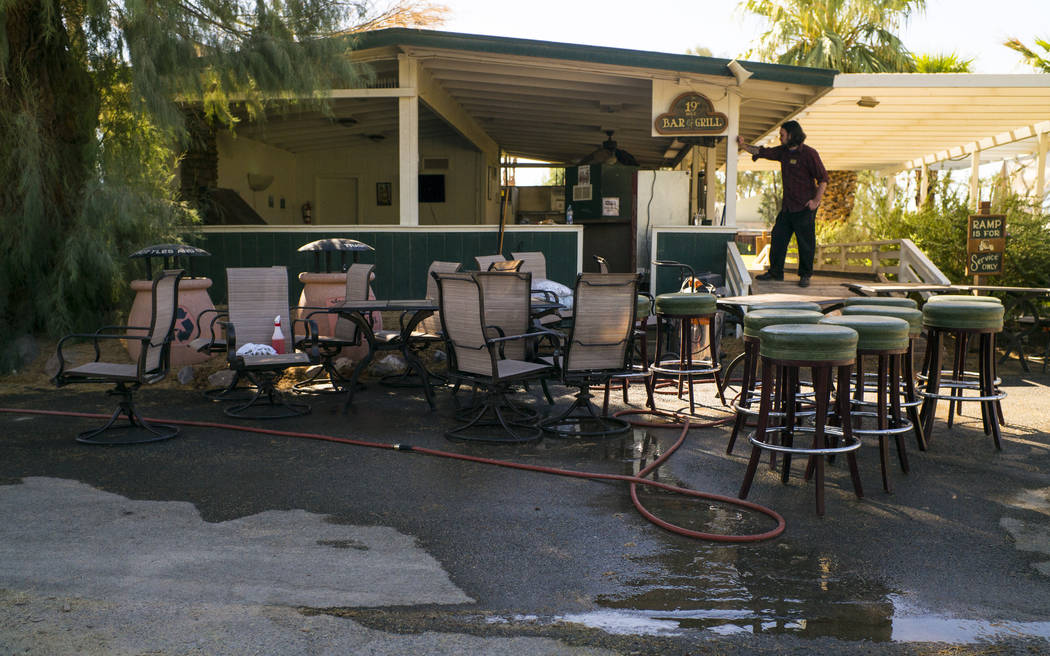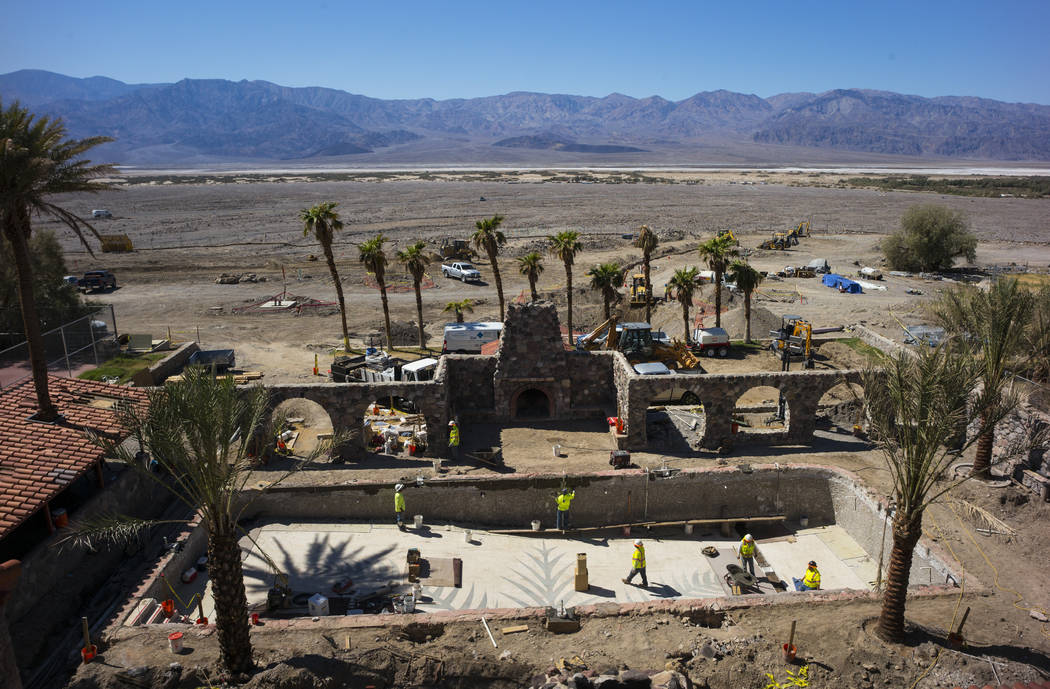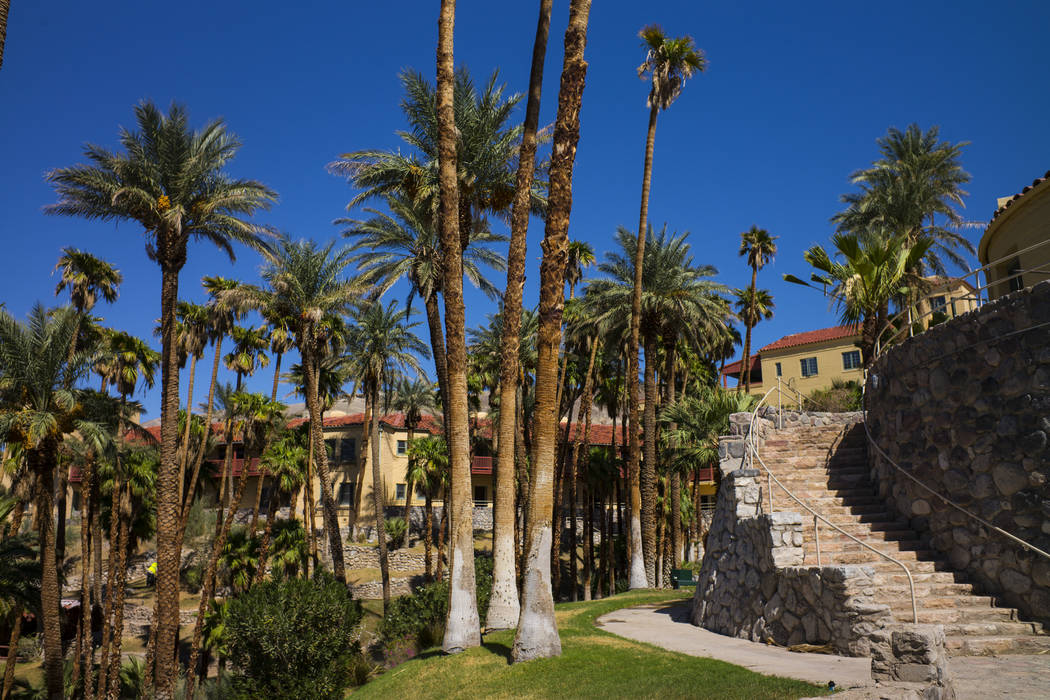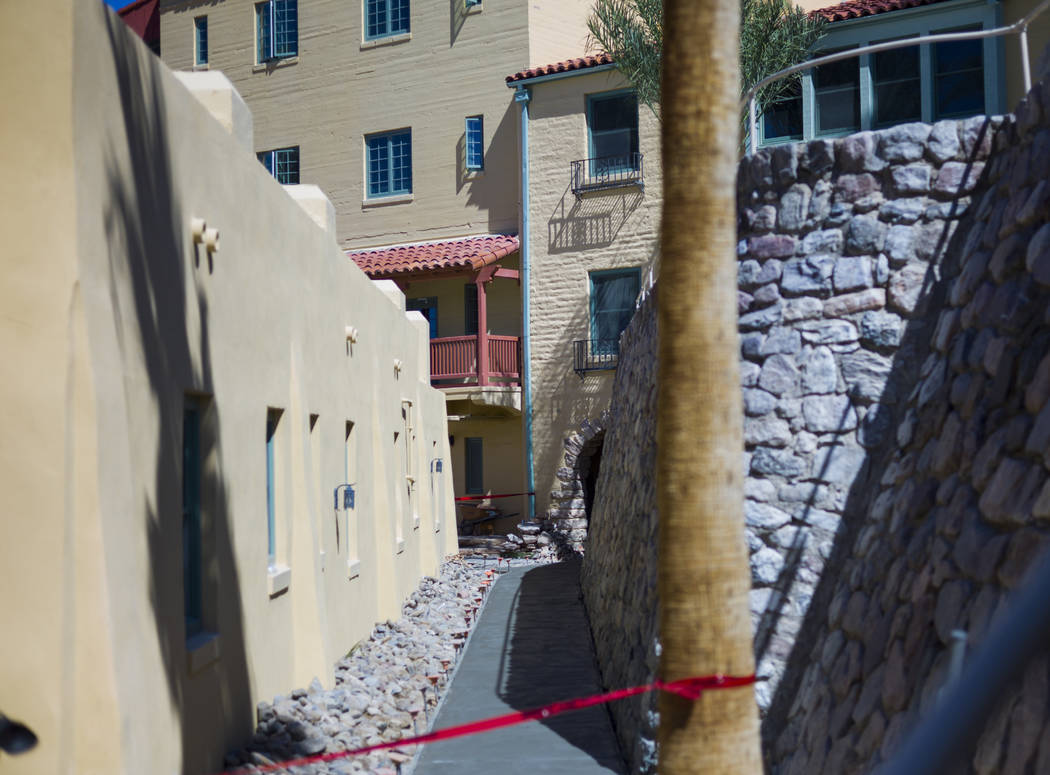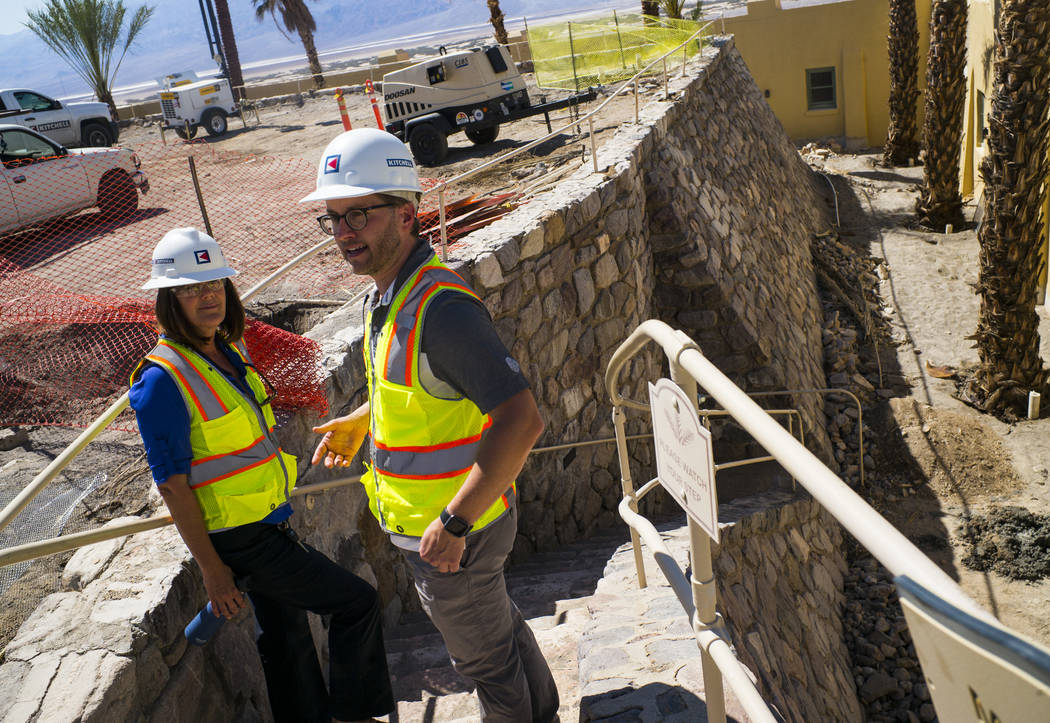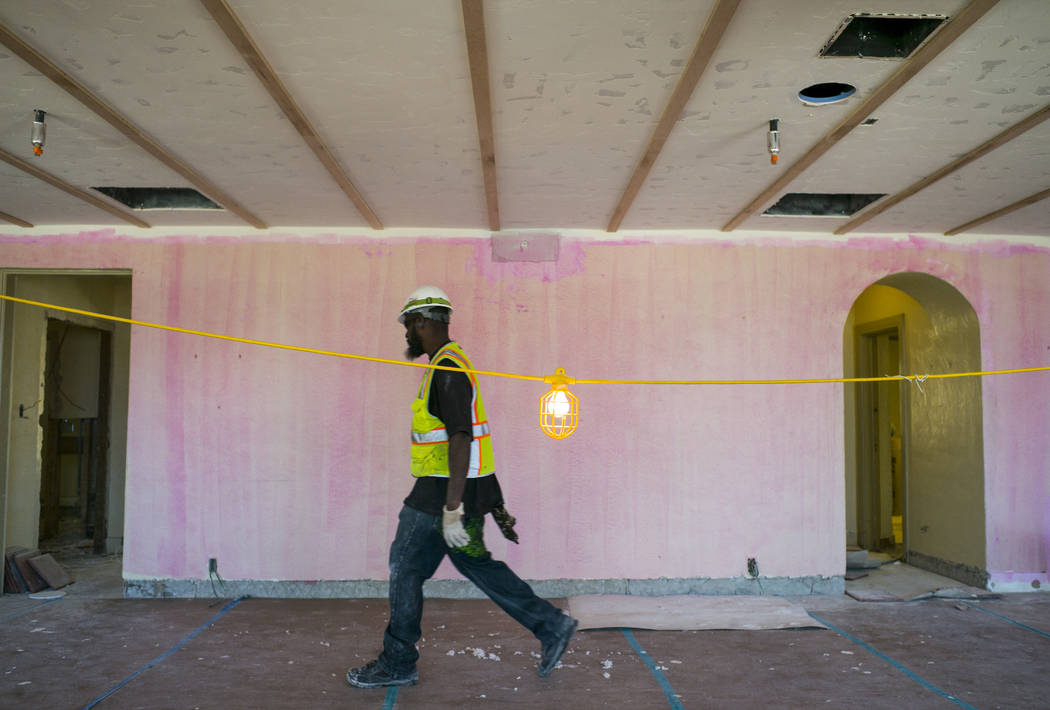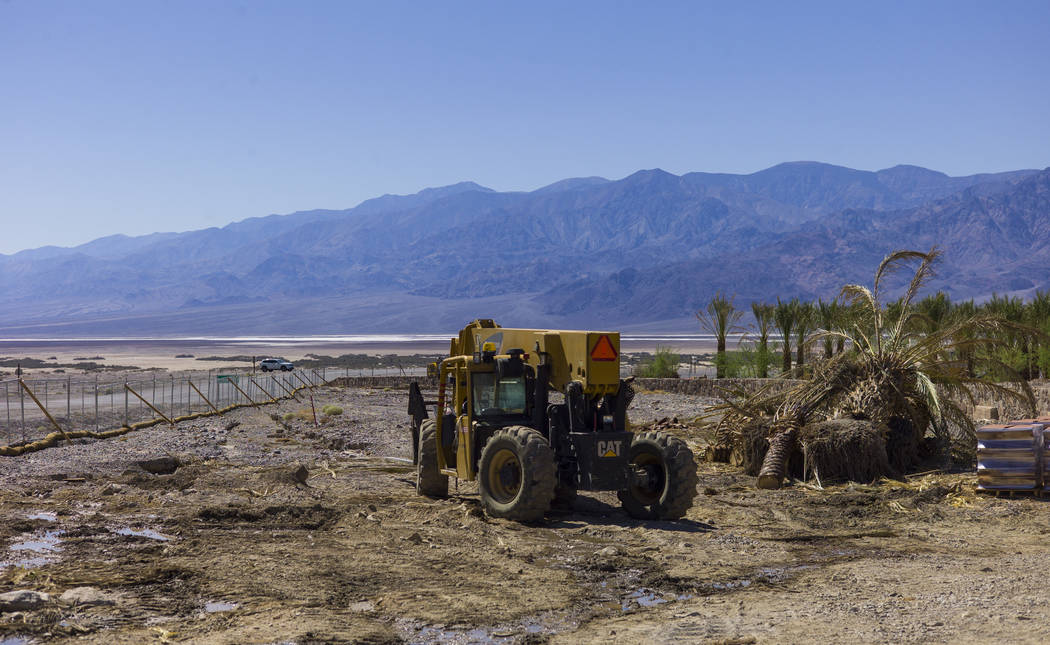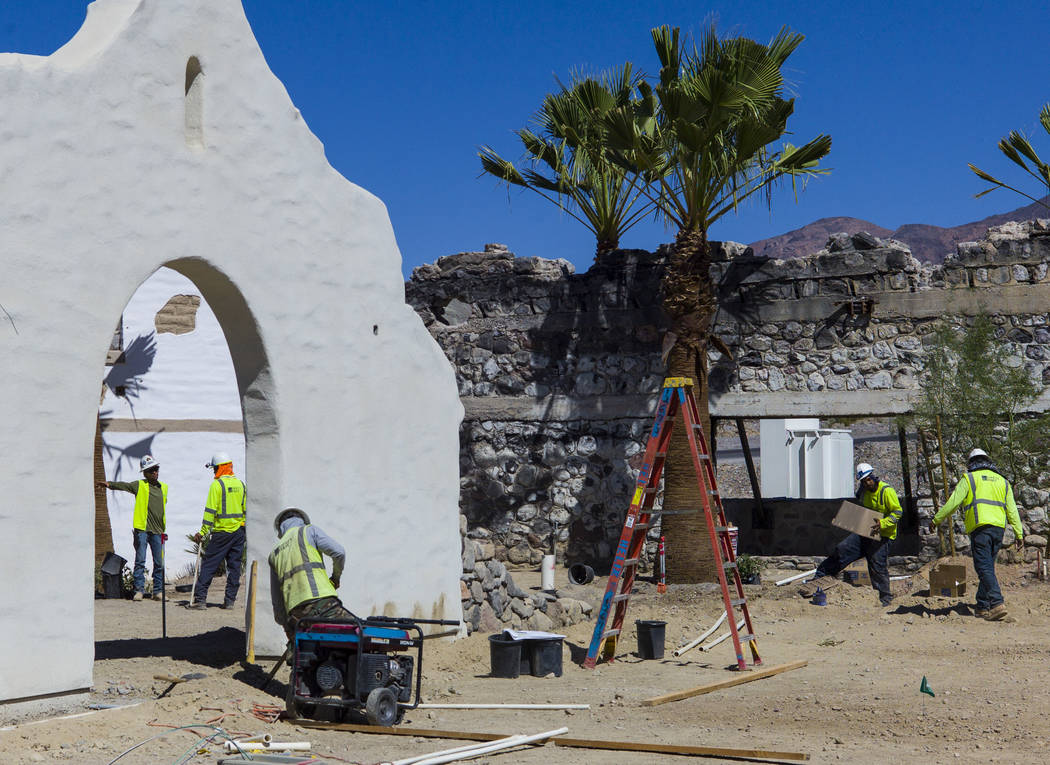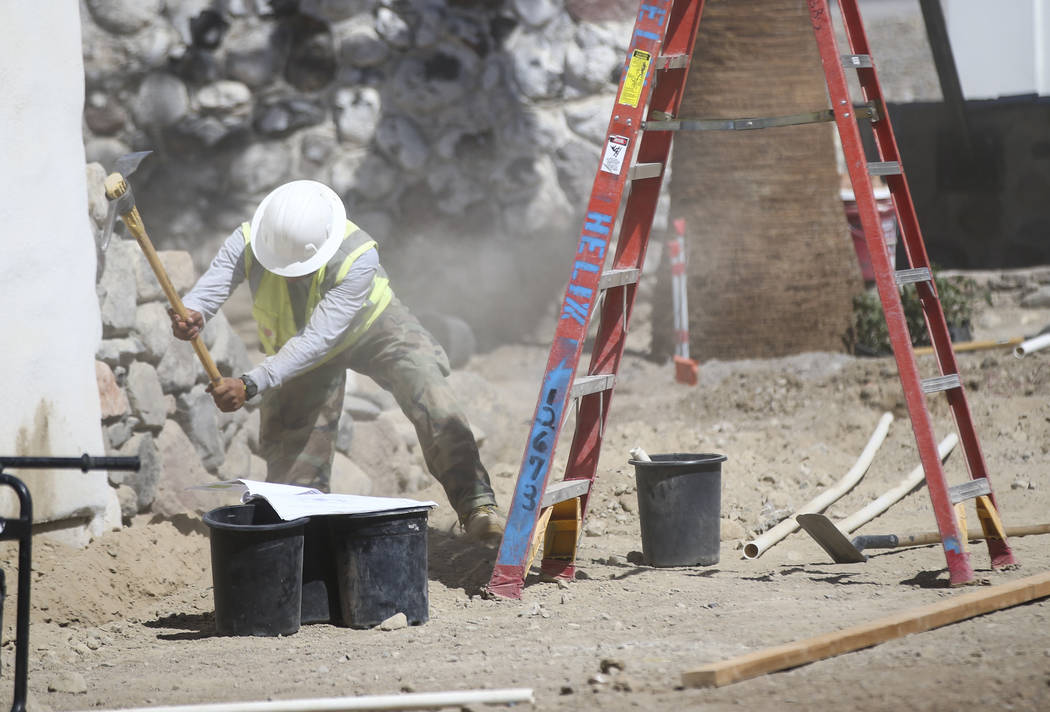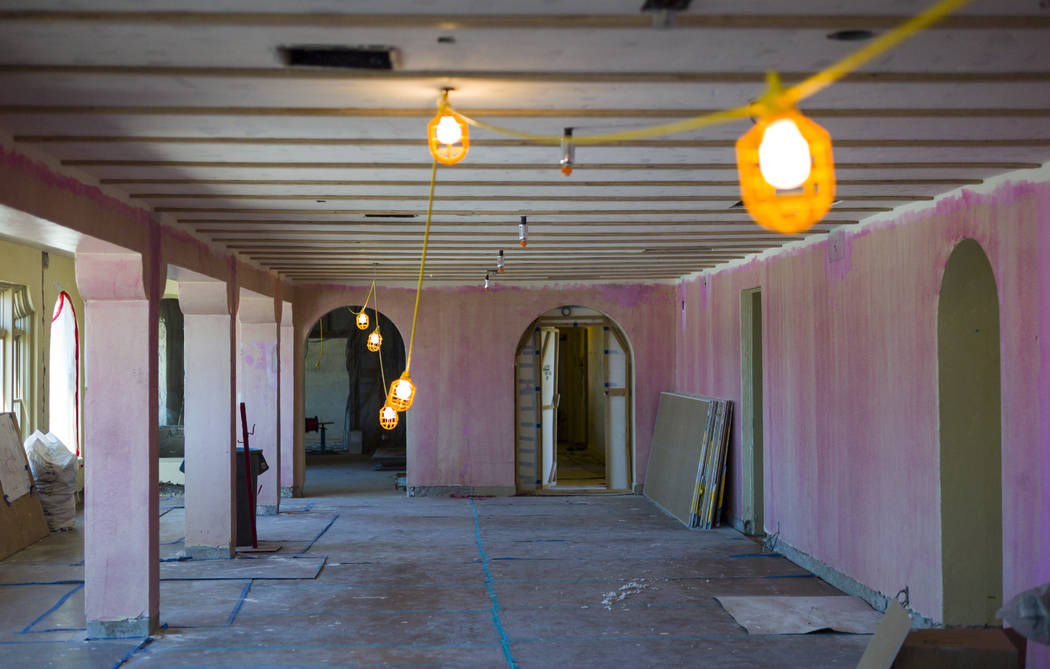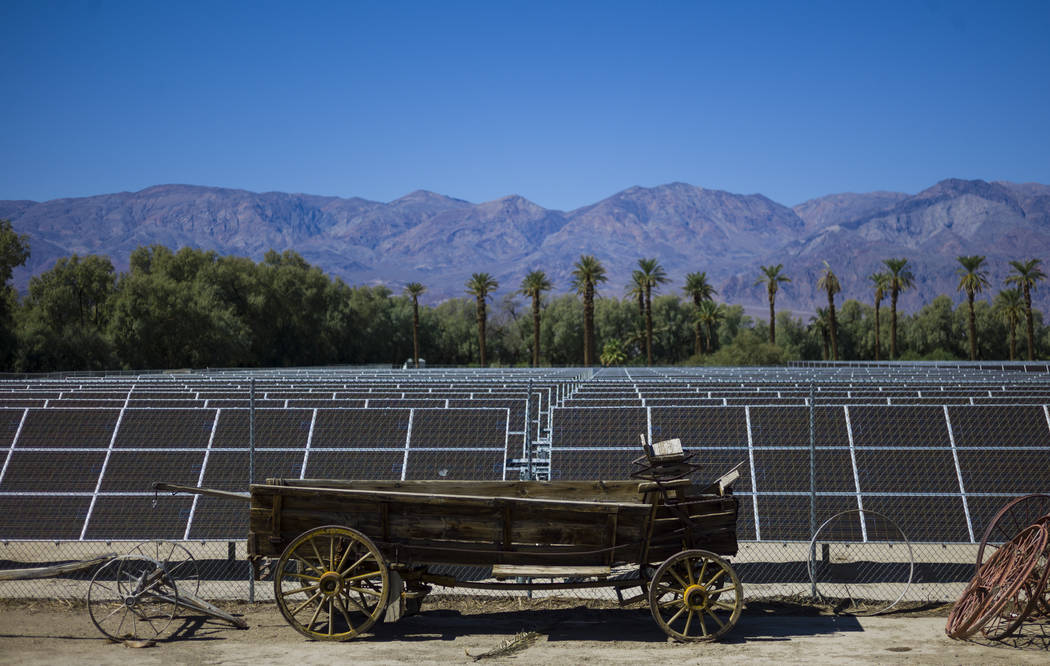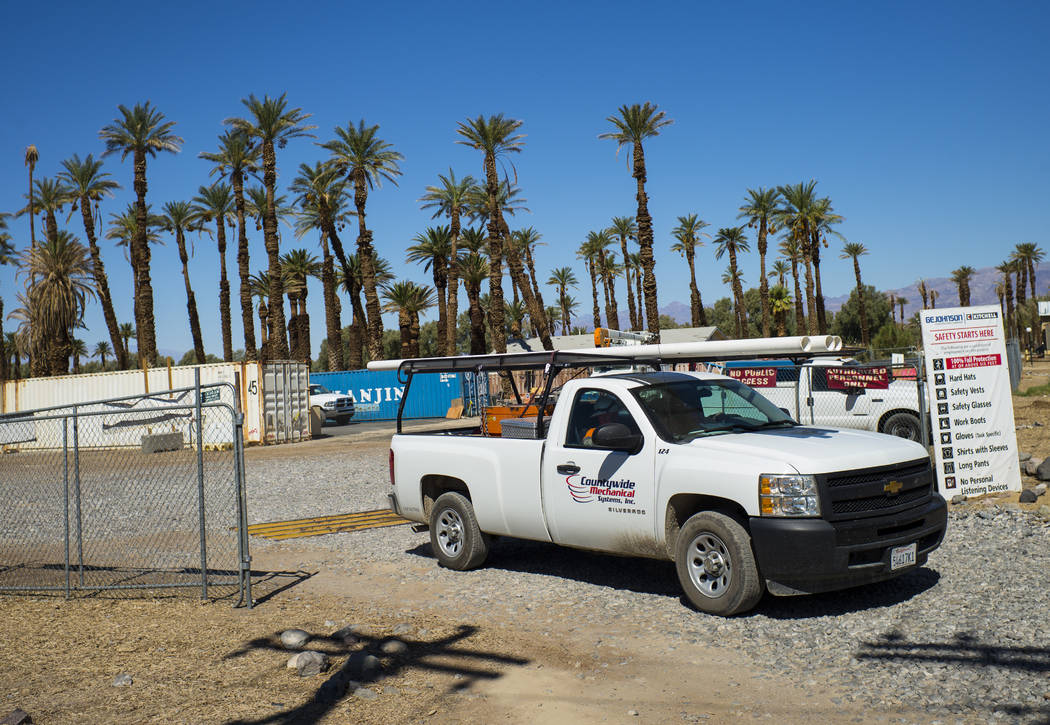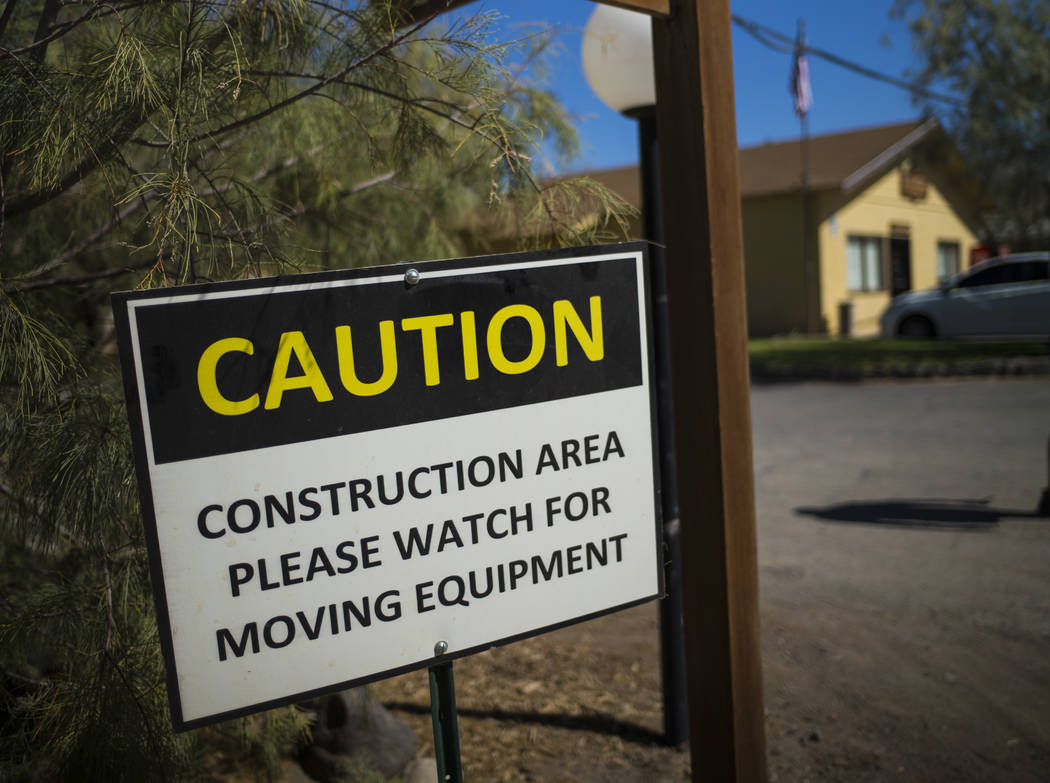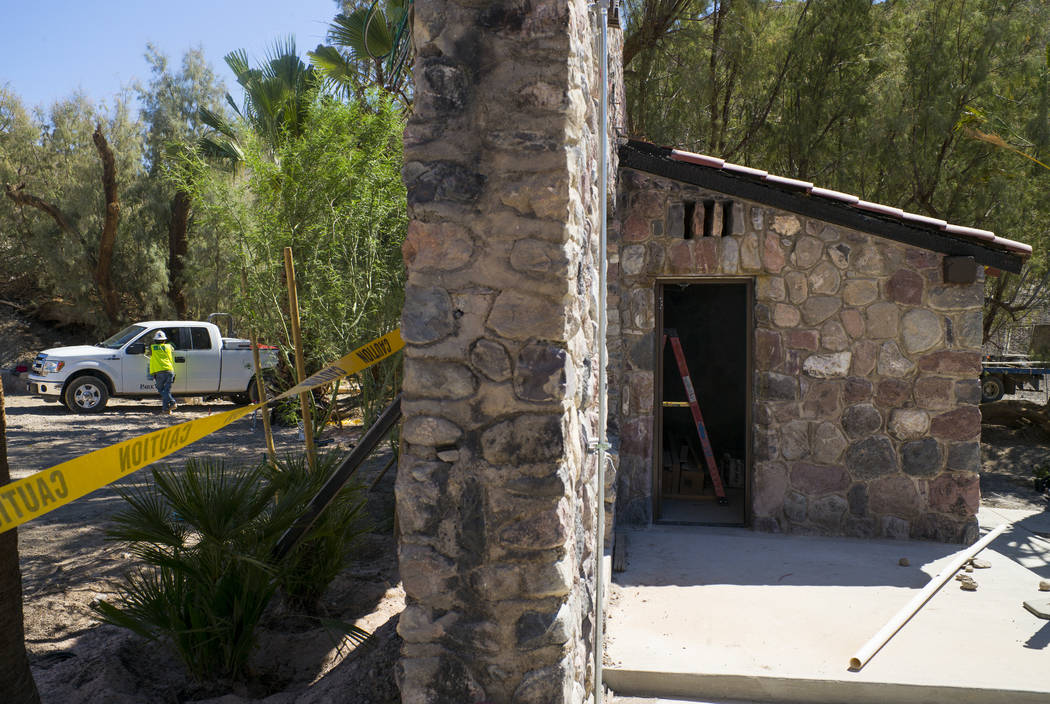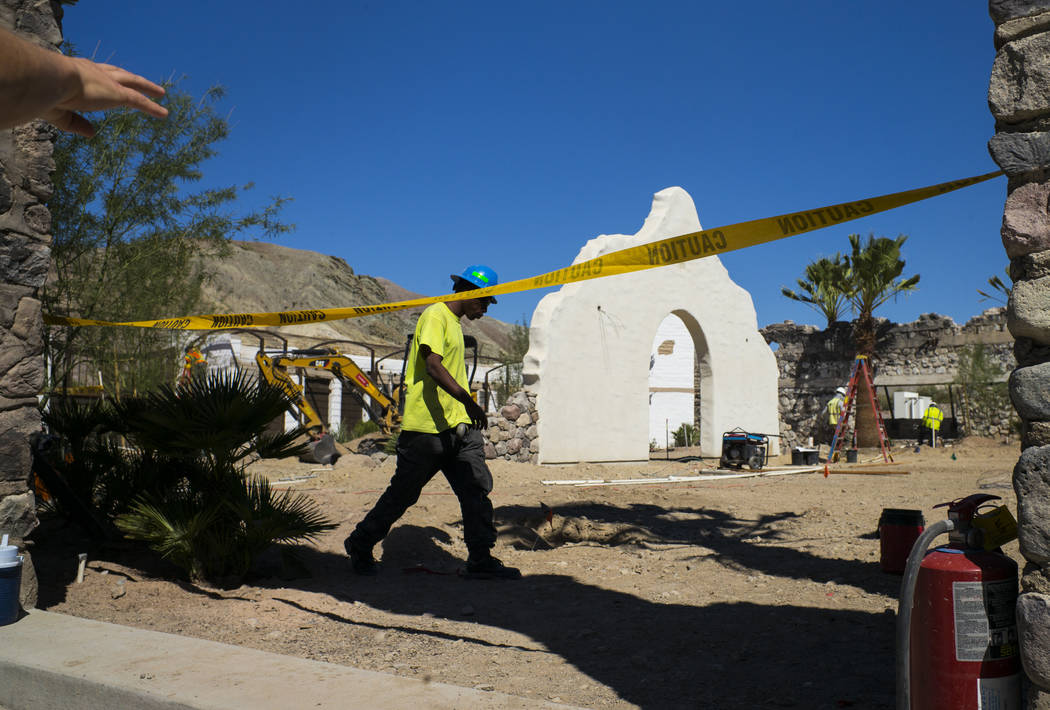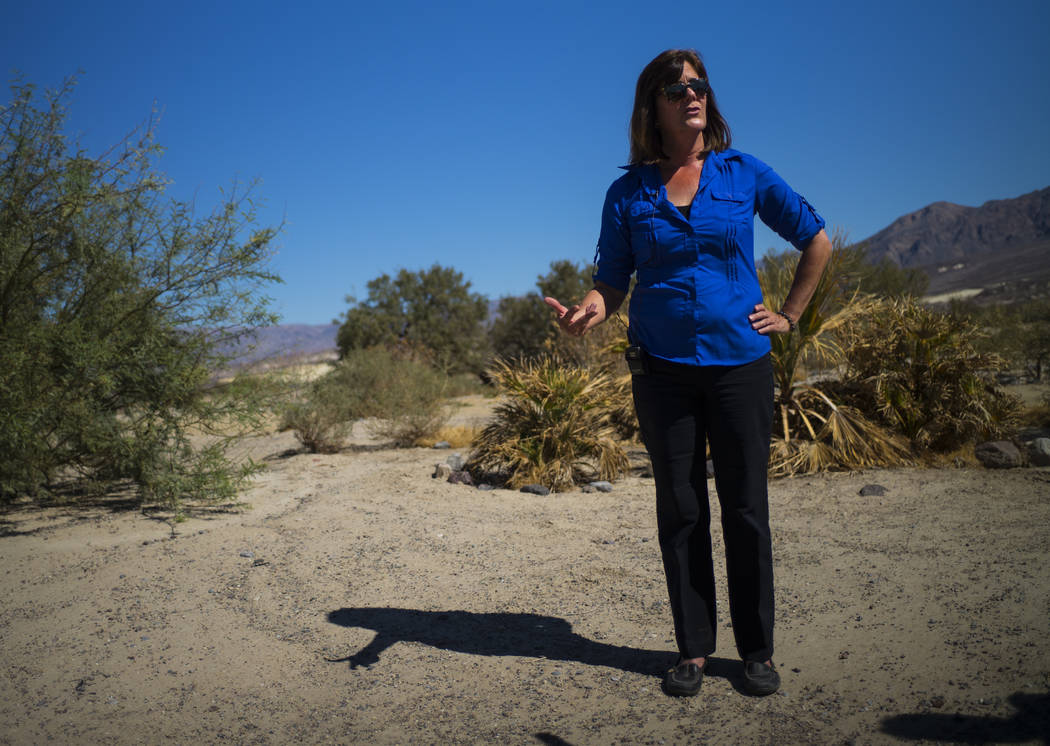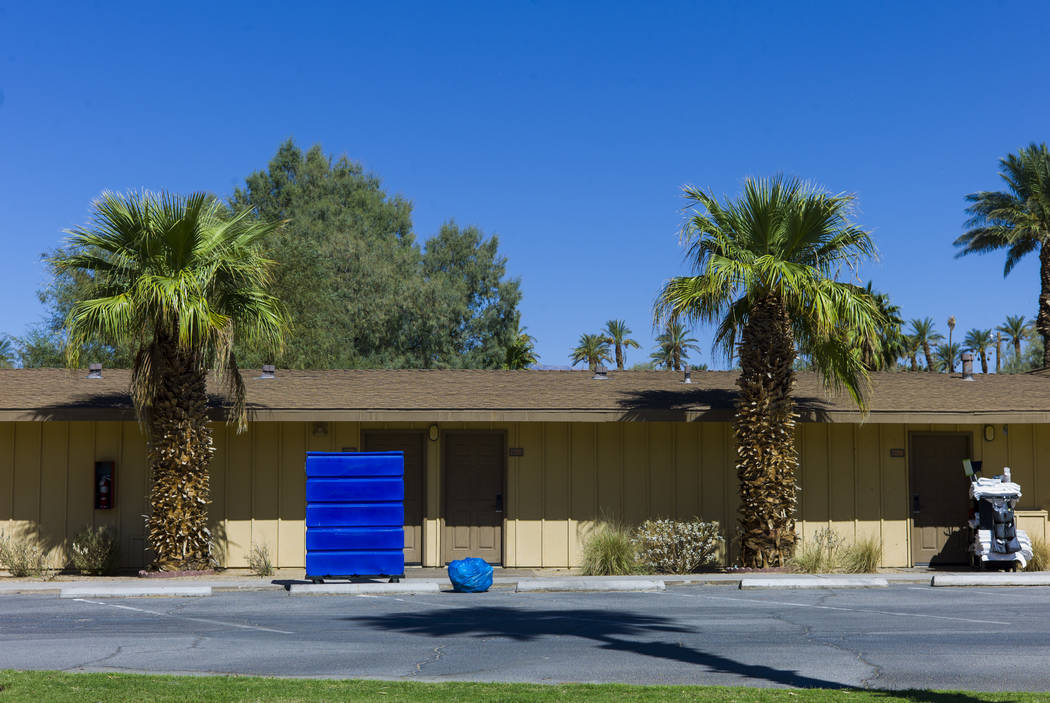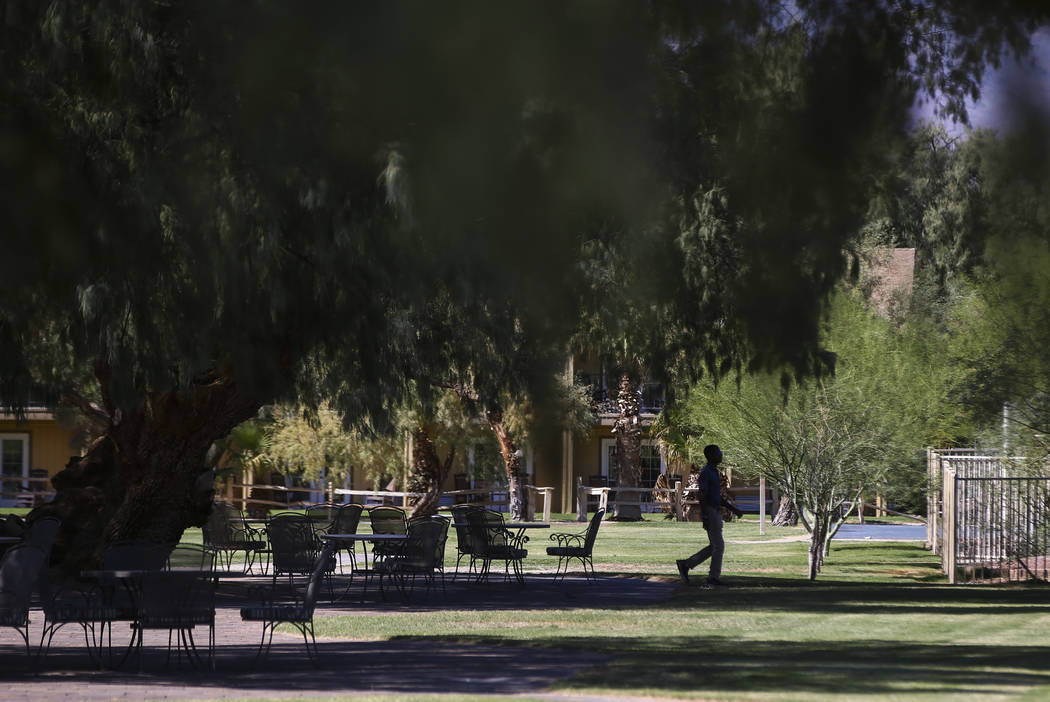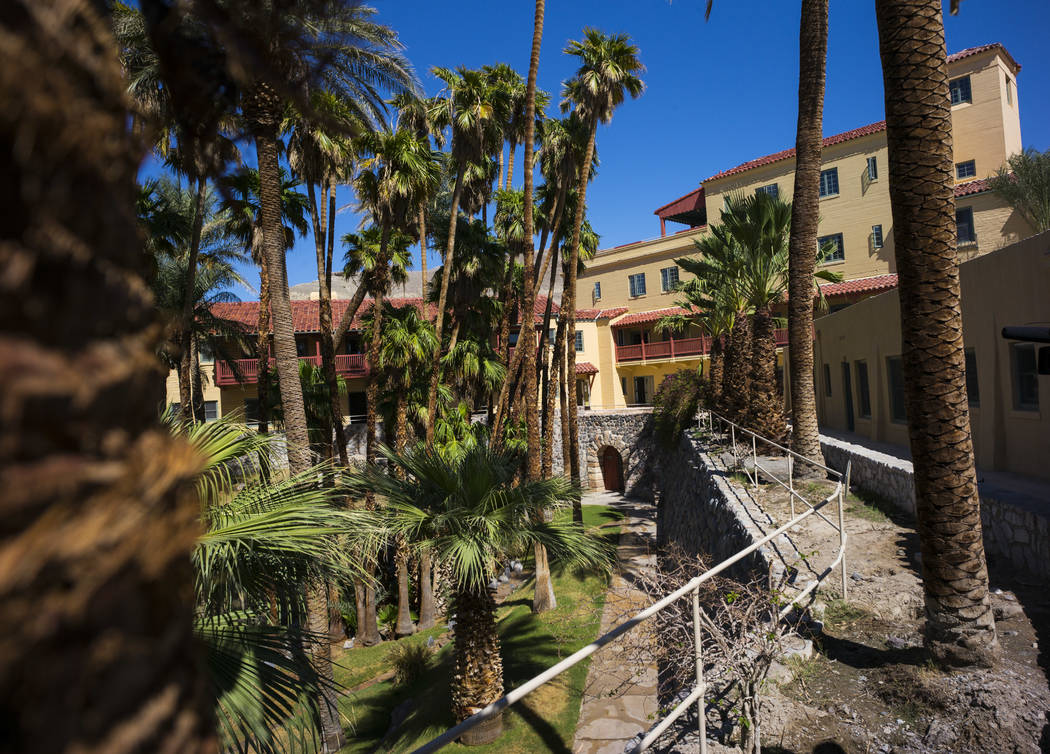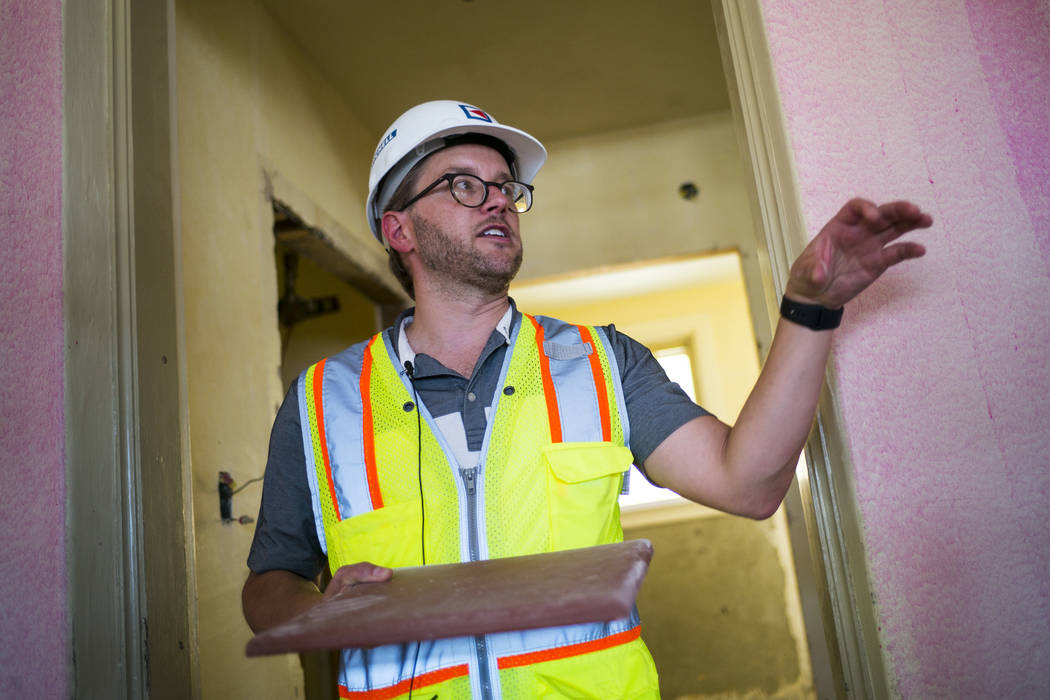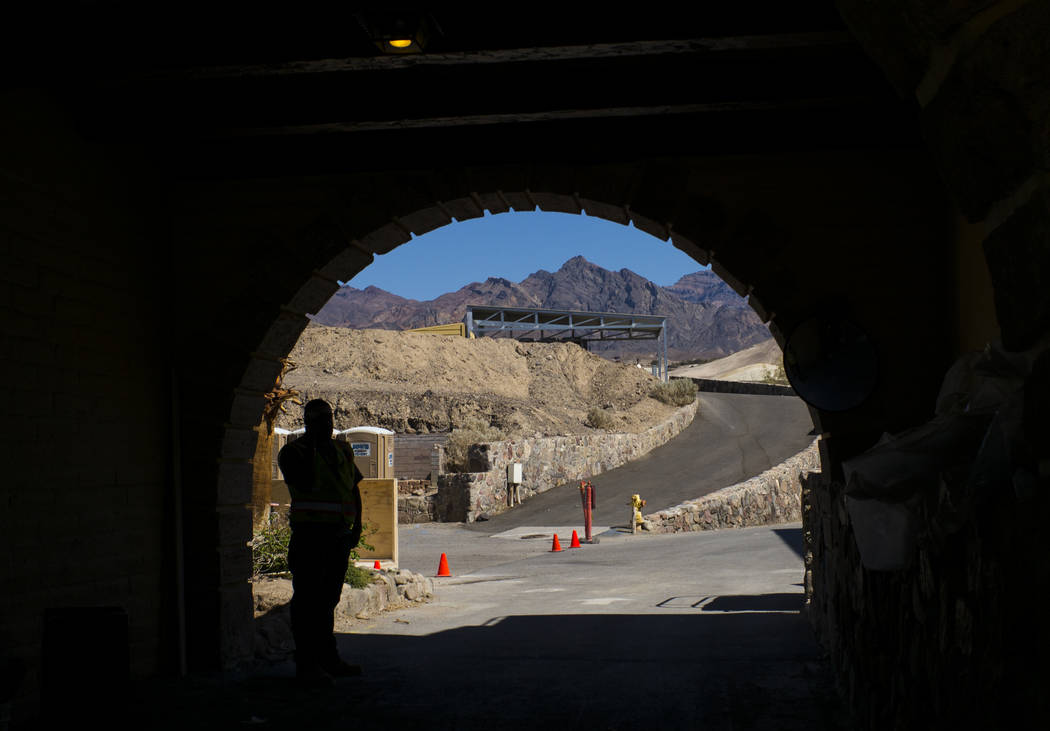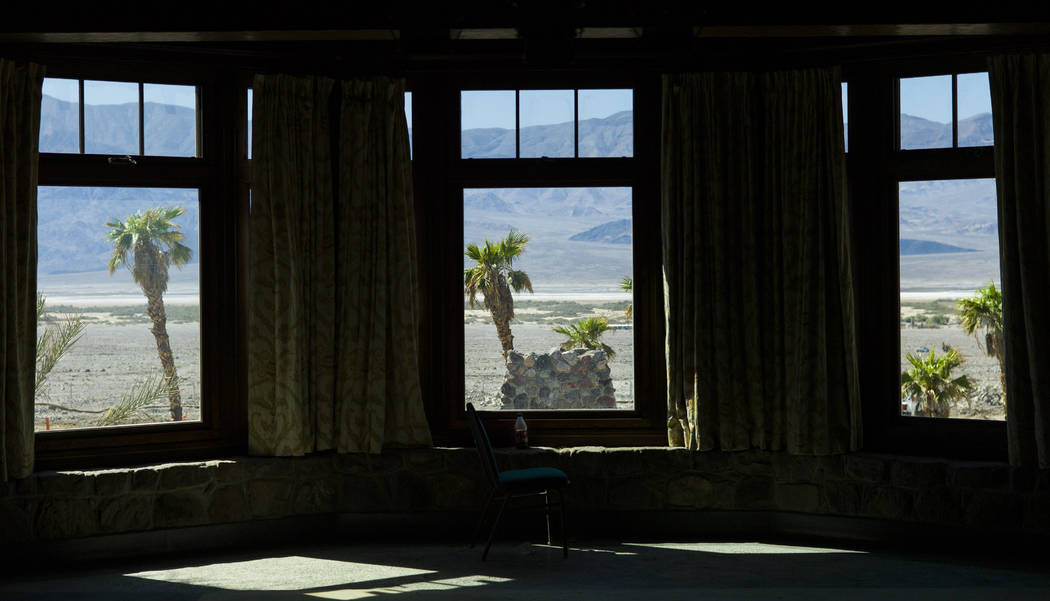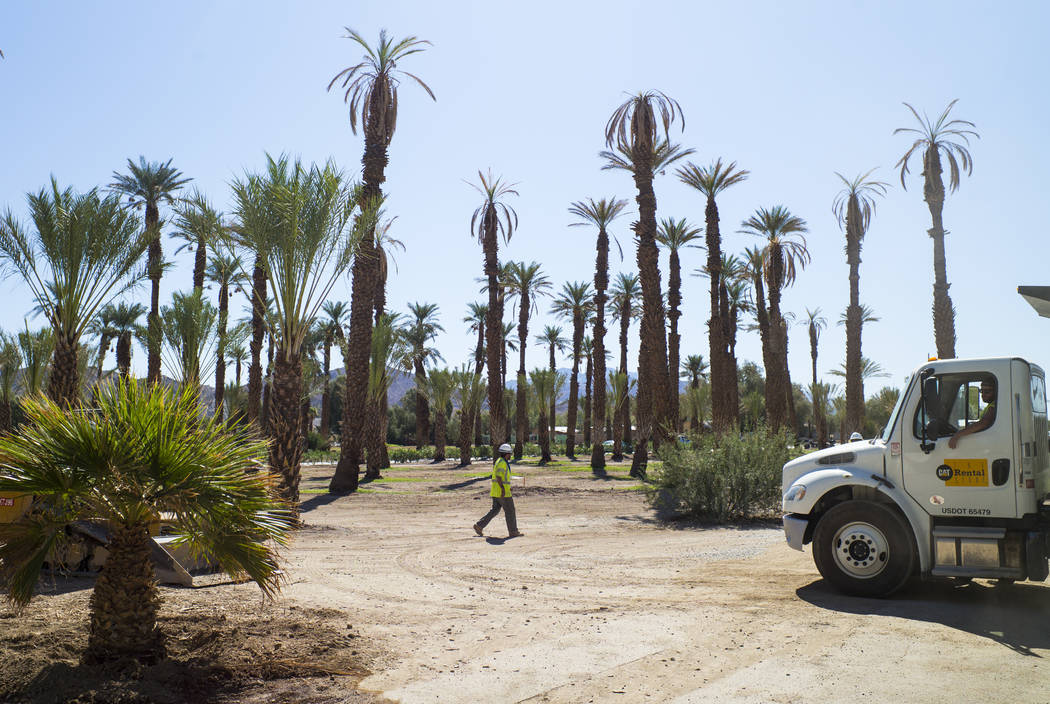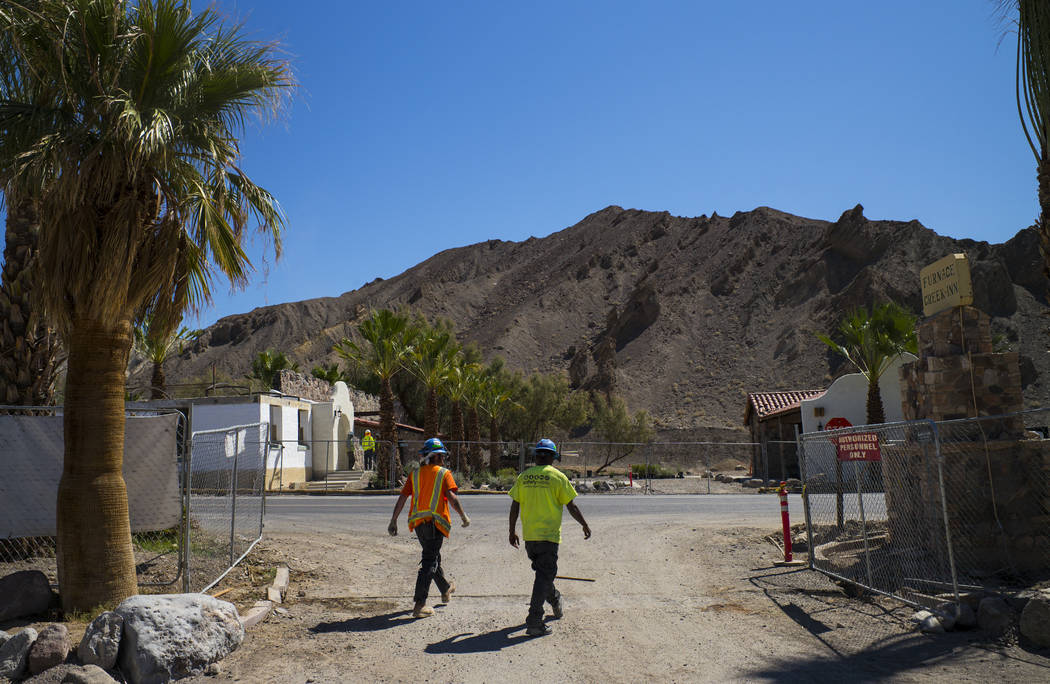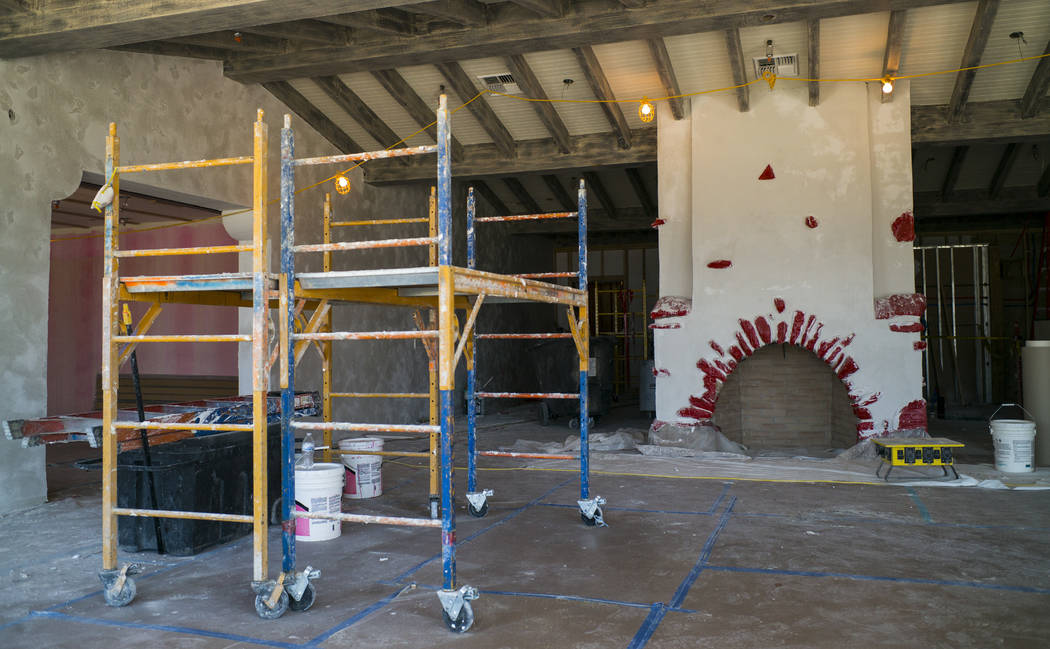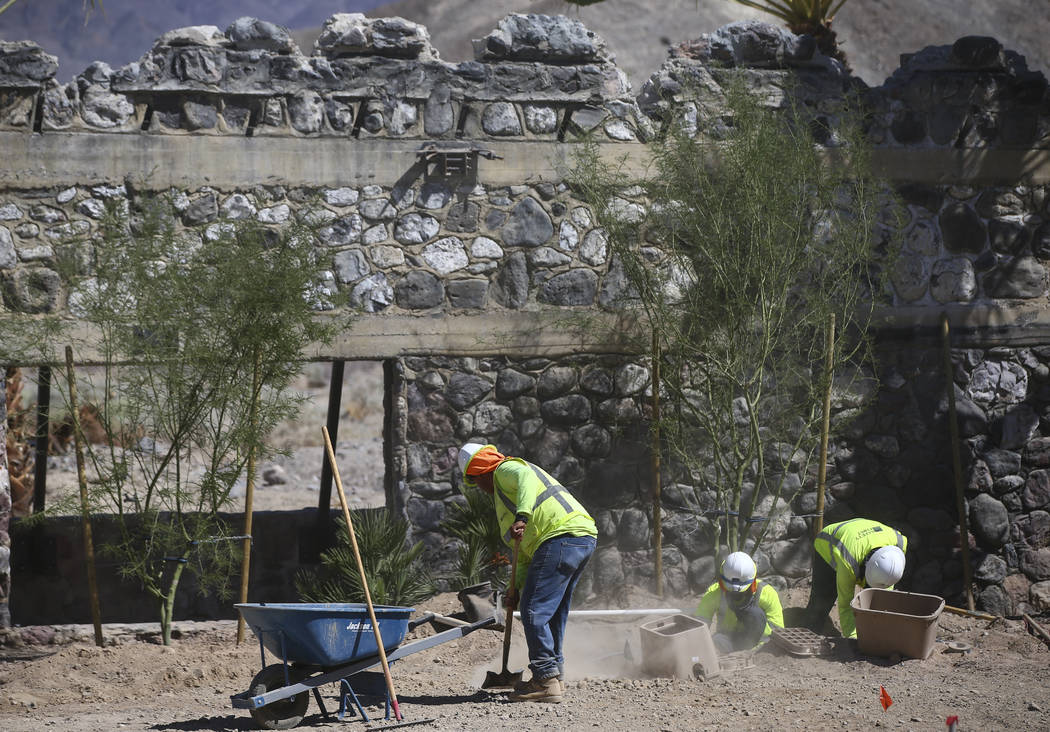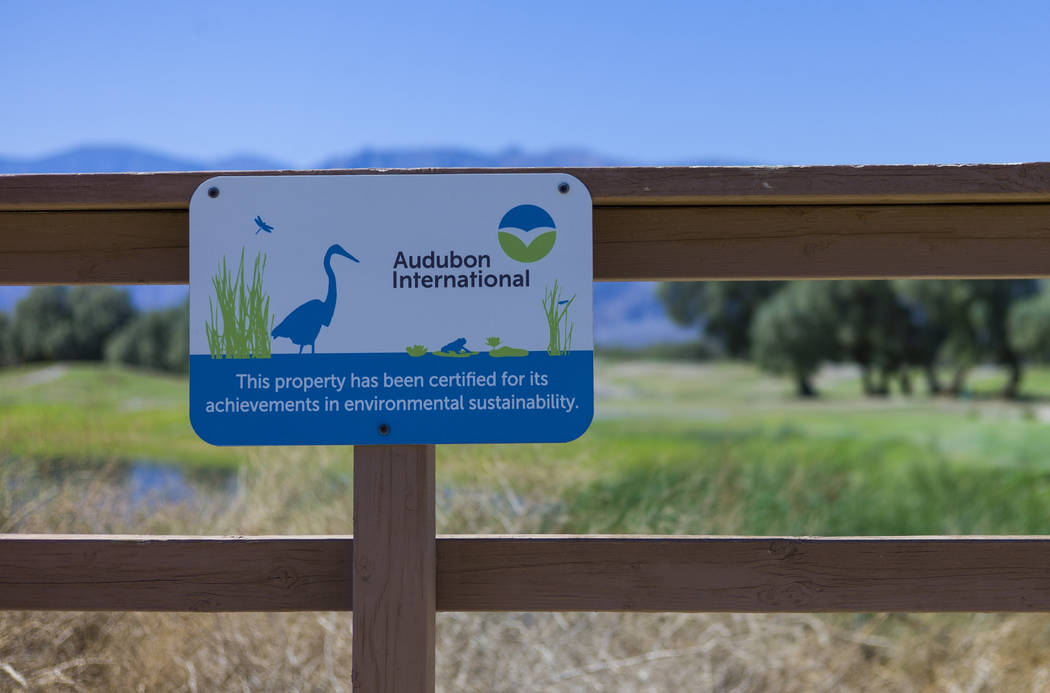Historic Death Valley property gets face-lift, new name
On a late fall afternoon in the heart of Death Valley, with temperatures hovering around 100 degrees, eight construction workers sporting yellow neon vests and white hard hats were jabbing the parched desert ground with picks and shovels and installing wiring.
Three years ago a fire engulfed an 80-year-old building serving as a laundromat and storage room for the historic Inn at Furnace Creek just across the road. By the time the flames were put out, just three stone walls remained.
The construction workers were transforming the ashes into an intimate garden embellished with a white adobe arch and peppered with towering palm trees illuminated by night lights. The original stone walls, decorated with bougainvillea vines, will enclose the future garden.
With the Milky Way visible above to the naked eye, the Mission Gardens — as this spot is now called — could rival Valley of Fire and the Grand Canyon as a scenic backdrop for couples tying the knot.
But the transformation of the former laundry and storage area into an idyllic, star-drenched event space is just one element of a massive face-lift totaling tens of millions of dollars and employing a hundred construction workers at its peak that will revitalize Death Valley’s most familiar resort.
The project will touch nearly all aspects of the inn and nearby ranch, including the golf course, historic trains and outdoor pools. It is the largest construction project at the site since the inn was completed in the 1930s.
The renovation is sweeping away not just the ashes of the burned-down building but also the decades-old inn name too. Xanterra Park & Resorts, which owns the property, has renamed it The Oasis at Death Valley.
Hotel expansion
The Oasis, about 150 miles northwest of Las Vegas, consists of the inn, a 66-room AAA-rated hotel nestled on a hill overlooking the Panamint Mountains, as well as the ranch, a 224-room economy hotel and golf course. The ranch is one mile down the road from the inn.
Financed by the Pacific Coast Borax Co., the inn opened on Feb. 1, 1927, with 12 rooms, and gradually expanded over the next eight years until it reached its current size in 1935.
Xanterra, with the help of Colorado-based design firm Oz Architecture, is now undertaking the largest upgrade and expansion of the resort since the 1930s.
The project includes the addition 11 two-room buildings around the western edges of the inn. The casitas, as they are called, will offer greater privacy, such as for newlyweds, and command the resort’s highest prices.
The inn’s Gold Rush banquet room, used for wedding rehearsal dinners and meetings, will be remodeled with new chandeliers and draperies.
“We are looking to build our wedding business as part of the remodel,’’ Dominie Lenz, the resort’s general manager, said during a tour of the property.
The renovation, though, goes far beyond a narrow focus to attract newlyweds. All 66 rooms in the hotel are being gutted and fitted with new pipes and wiring.
The retail store near the reception desk will return to its original status as a library, while the concrete furnishings added in the 1990s will be replaced with wood and tiles that recall the inn’s early days.
“The goal is to have a state-of-the-art hotel that still looks and feels historic,’’ Lenz said.
The inn has historically closed from May through September. But a combination of increasing demand and improved infrastructure, including upgraded air conditioning and windows, will mean the inn will now operate year-round after it reopens in December.
“That is one of the greatest benefits of the upgrade,’’ Lenz said. “Now (the inn) has another 100 years in it.’’
The ranch
The upgrade is bringing significant changes down the road to the ranch, which houses the Borax Museum and the world’s lowest golf course by elevation, at 214 feet below sea level.
Xanterra brought in railroad specialists from its Grand Canyon property to refurbish the 100-year-old borax trains next to the museum.
About a quarter of the grass on the course will be replaced with native plants to reduce water consumption, Lenz said. The course’s pond has also been lined and sealed to prevent water loss.
A town square made of adobe buildings will be constructed at the ranch not just to give it a historic feel but also to tie it architecturally to the inn. The town square will include a fountain and seating under palm trees. Several hundred palm trees will be planted as part of the upgrade.
“Developing these outdoor locations will bring so much more character to this destination,’’ Lenz said.
Work at the ranch will finish in the summer, but it will remain open throughout construction.
3 a.m. work start
Major construction at the Oasis began in spring after the traditional seasonal closing of the inn.
Building in Death Valley, the hottest place in the Western Hemisphere, during these months required some adjustments.
Construction work began at 3 a.m. to avoid the 120-degree daytime heat, which can harm not just workers’ well-being but also the quality of the cement.
Trucks hauling ready-mix cement to the Oasis would leave Pahrump around midnight to arrive by 3 a.m., said Chris Vandall of Oz Architecture.
Because of weight constraints, the trucks had to take a longer route to the inn through Rhyolite, he said.
Some contractors from distant towns stayed on property during the course of their work. Local Native Americans carried out some of the construction work.
July turned out to be the hottest month on record for Death Valley, with daytime heat averaging 119.6 degrees, according to the Los Angeles Times.
“It makes us badge-worthy,’’ said Lenz, adding that she saw the thermometer hit 131 degrees this summer.
Contact Todd Prince at 702-383-0386 or tprince@reviewjournal.com. Follow @toddprincetv on Twitter.
From mining to golf
The ranch at the Oasis was developed in the 1880s as an alfalfa farm to feed the 20-mule teams that hauled borax from nearby mines. The ranch and inn receive water from natural springs.
A small golf course was later built on the property that gradually expanded to nine holes and then 18 holes. Four golf tournaments are held there each year.
Some deep-pocketed tourists fly in on private planes to play, landing at the nearby airport. Other wealthy individuals from California or Las Vegas simply fly in for brunch at the Oasis on the weekends.
The Oasis has a 1-megawatt solar power plant that was installed in 2008. It was the largest privately owned solar installation in the United States at the time, said Dominie Lenz, the resort's general manager. The plant generates about one-third of the resort's needs.
California residents account for 34 percent of guests staying at the Oasis, and foreign tourists account for 24 percent. Nevadans make up 3 percent, and the remaining 39 percent come from the other 48 U.S. states.




